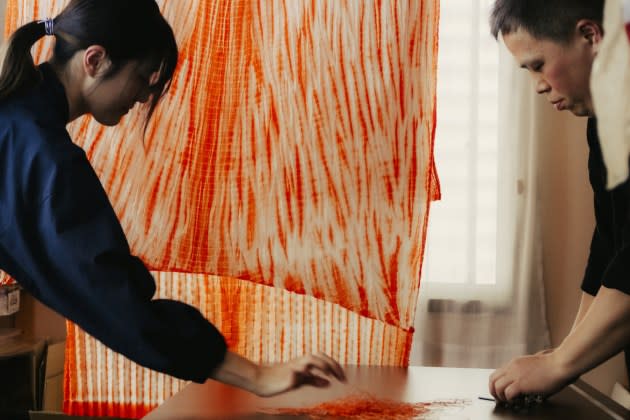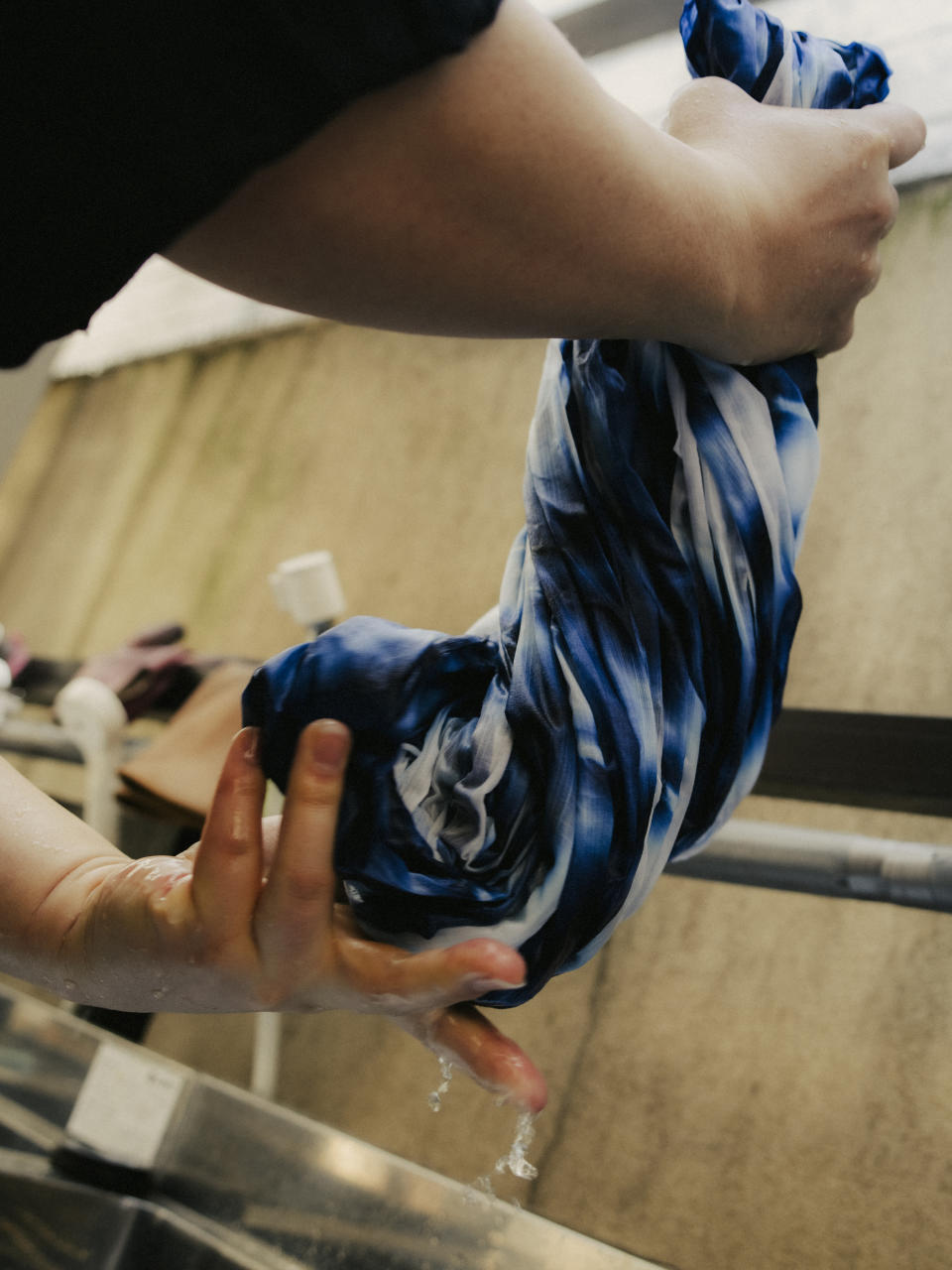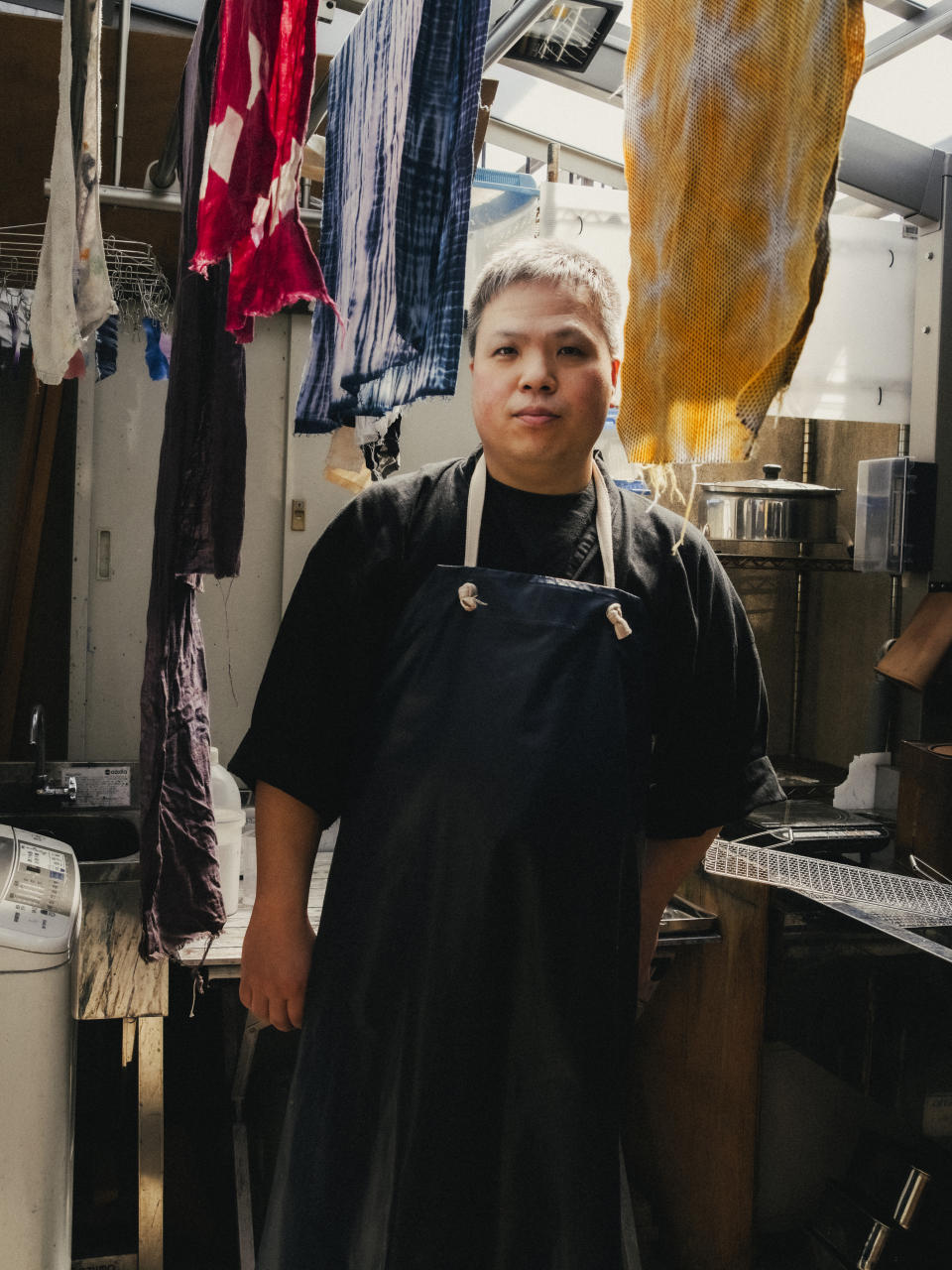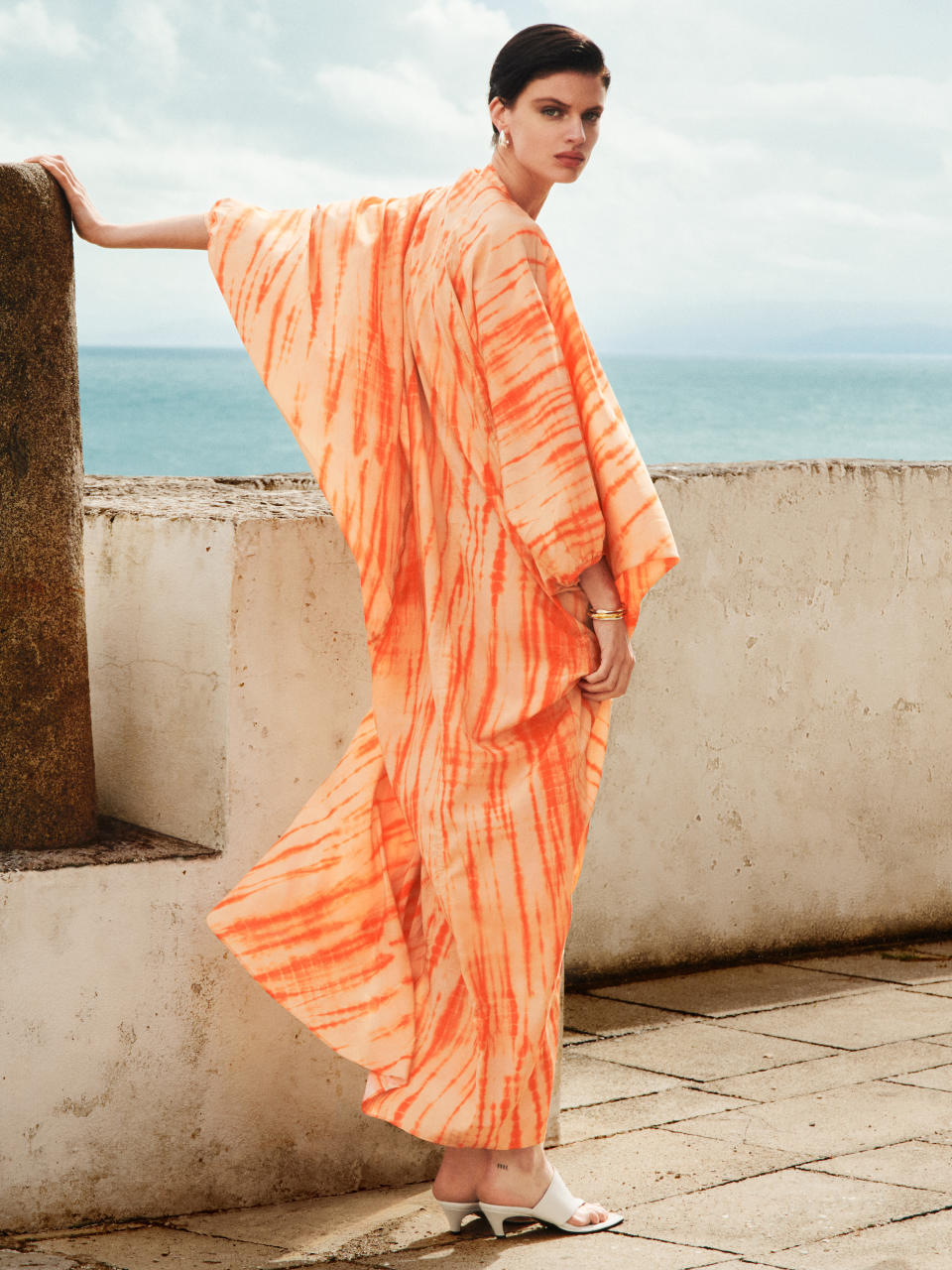EXCLUSIVE: Cos Exalts an Endangered Japanese Dyeing Technique for a Summer Capsule

Partnering for the first time with a Japanese artisan, Cos conscripted Kyoto-based Kazuki Tabata, an expert at binding, folding and dyeing cloth, for a limited-edition summer capsule collection.
It exalts shibori, a resist-dyeing craft that is at risk of dying out, with Tabata billed as one of the last traditional practitioners.
More from WWD
According to him, more than 100 shibori techniques exist, and practitioners can only master two or three in a lifetime, so traditionally it took nearly an entire village to make a kimono.
At present, shibori fabrics are used most commonly for hand towels, lightweight robes known as yukatas and some clothing.

“With the decline of the kimono market and economic downturns, coupled with competition and conflicts within the industry, few successors are being trained and many craftsmen are now elderly,” Tabata told WWD via email. “The COVID-19 pandemic and the rise of low-cost products following years of deflation in the Japanese economy have forced many craftsmen out of business, leaving few successors and threatening the tradition of shibori.”
To be sure, Tabata was surprised when Cos reached out, confessing he initially thought it was a prank.
“I never thought a person as unknown as myself would be approached for such a collaboration,” he said. “I hope people will appreciate not only the designs but also the stories and backgrounds of traditional crafts.”
Among the patterns Tabata settled on for the 14-piece capsule, which spans clothing and accessories for men and women, one requires the “sekka” shibori technique.

“This pattern is a hexagonal geometric design that has been used since the Heian period, initially in the decoration of Buddhist statues,” Tabata explained. “It later came to be known as the hemp leaf pattern because it resembles the leaves of the hemp plant.”
Hemp grows very quickly and straight upward, which is why it has been used in baby clothes and diapers “since ancient times,” he explained. “The hemp leaf pattern is also featured in the kimono worn by Nezuko in the anime ‘Demon Slayer,’ conveying the deep wishes of her parents.”
Karin Gustafsson, design director at Cos, said she learned about shibori as a fashion student, drawn to its “inherent sense of movement and softness.…Each piece has a feeling of being unique and handmade.”
“As an independent craftsman who has dedicated many years of his life to keep the craft alive, we are honored to work with Mr. Tabata and his team and to share the craft and story of shibori with our community,” she added.
While the London-based brand, which is owned by H&M, is known for its understated aesthetic — hinged on minimalist designs and subdued color — it sparks its collections with the occasional burst of bold color, and arty patterns.

Gustafsson said Tabata’s range of watery, hand-crafted prints “really captured the essence of the summer season” and offered a “subtle yet impactful way to incorporate pattern.…We are inspired by the versatility of shibori and its ability to transform fabric into wearable art.
“Through this collaboration, we aim to create pieces that showcase exceptional craftsmanship while reflecting the rich cultural heritage and innovative spirit of Japan.”
She plans to visit Kyoto later this month, with a clutch of international press in tow, to meet Tabata and his team, visit the University of the Arts, and discover the shibori techniques up close.
Tabata is all in.
“I feel a sense of mission to not let the art of shibori, which has been passed down from person to person for over a thousand years, end with my generation,” he said in the interview. “I am committed to ensuring it is known and appreciated by more people so that it can be passed on to future generations.”
For the Cos collaboration, Tabata devised a new pattern dubbed “tesuji.”
“I had to imagine what tools were necessary, repeatedly visiting hardware stores to gather materials and hand-make the shibori tools,” he said. “With these tools, I was able to achieve the even and random dye patterns that the technique name suggests.”
The Cos × Tabata Shibori collection will be available online globally from June 5, as well as in 31 Cos stores in Europe, 21 locations in Asia-Pacific, nine locations in North America and in four franchise stores.
Retail prices range from $89 for a cotton-viscose T-shirt up to $285 for a roomy dress in Mulberry silk and cotton.

Best of WWD

